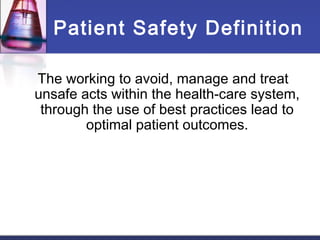What are the strengths of the biopsychosocial approach to cope with disabilities, impairments, and diseases. study the article and understand how implementation of biopsychosocial model has brought success in patient treatment. If you need assistance with writing your nursing literature review, our professional nursing literature review writing service is here to help!
What are the strengths of the biopsychosocial approach to cope with disabilities, impairments, and diseases.
how does biopsychosocial approach work?
Various approaches of rehabilitation based on scientific models are implemented to cope with disabilities, impairments, diseases (Lorenzo, M, 1999, p.1). Before the implementation of Biopsychosocial model, Biomedical model was traditionally practised and heavily used upon assessing patient. (Engel, 1977, p.130).
Engel (1977, p.131) states that biomedical model “illustrates the alteration of particular biochemical is commonly assessed in a specific diagnosis in relevant to the pattern of the disease”. He also mentioned that additional concepts and frames of reference should be taken into account.
Biopsychosocial model is said to be an improved model than biomedical model as it is a way of examining patients at the two important interlinked systems: mind-body connection. (Engel, 1977, p.132). This model was proposed by psychiatrist George Engel in a 1977 article in Science. This biopsychosocial model treats patients from biological, psychological and sociological aspects of body (Lakhan, 2006). Unlike biomedical model, psychological and sociological was not being emphasised as it solely examine the biological aspect (Erskine et al, 2003, p.173).
The most obvious dissimilarity of Biopsychosocial model than Biomedical model is that Biopsychosocial model encourages patient’s active participation whilst Biomedical model is not much a model which promotes patient-centred care in terms of appreciating the individual needs and right of patients, understanding patients’ illness and health care experiences, and embracing them within effective relationships which enable patients to participate in clinical reasoning more (Ersser, 2008, p.68).
Biopsychosocial model approach was used during a clinical placement; Mdm. C went for her first treatment in physiotherapy department after being referred case from an orthopaedics doctor to a physiotherapist. Mdm. C is a 56 years old housewife who is diagnosed with shoulder osteoarthritis. Shoulder osteoarthritis typically affects patients over 50 years old and it is more common in patients who have a history of prior shoulder injury as well as genetic predisposition (Cluett, 2009).
Mdm. C was having language barrier with the physiotherapist responsible, Mr. S as she is incompetent in speaking English and Malay. Immediately, Mr. S finds another assistant who is able to communicate to her in Mandarin (Chinese). Despite the barrier faced, Mdm. C was greeted nicely by the Mr. S. Based on the physician’s report, Mdm. C’s condition fulfilled the symptoms of shoulder osteoarthritis: inflammation and degeneration of cartilage, pain with activities, limited range of motion, stiffness of the shoulder, swelling of the joint, tenderness around the joint, and a feeling of grinding or catching within the joint (Cluett, 2009).
Both objective and subjective assessment is carried out to initiate the treatment as well as to identify and confirm the biological aspects. (Petty, 2004) while assessing Mdm. C subjectively, Mr. S communicates with Mdm. C whole-heartedly, questioning her about her background, her career, social life, daily habitual routines. Petty and Moore (2007, p. 130) states that “this would ease the physiotherapist to investigate more about the initial cause of the deformity as well as to treat her effectively in achieving the short-term and permanent goal in rehabilitation”.
Physiotherapist practiced active listening while listen with heart of compassion, patience and without any judgmental view. Physiotherapist should also choose words carefully and meaningfully without stepping into patient’s borderline by using open-ended questions to search for information until full understanding is achieved. Sensitive verbal and non-verbal communication is witnessed throughout the session (Petty and Moore, 2007, p.130).
Physiotherapist’s attempt to enquire more about Mdm. C is successful as Mdm. C became more comfortable in exposing and describing more about her complains of pain. This indirectly allows the physiotherapist to gather more information for a better rehabilitation outcome at ease. Engel (1977, p.130) states that ‘more information needs to be gathered during consultation as physiotherapists need to find out about the patient’s biological signs, psychological state, their feelings and beliefs about the illness, and social factors such as their relationship with families and larger community’.
Thus, the interview process acts as a mean for the patient to give as much information as possible not solely based on physical symptoms, but how the illness affects the patient. (Engel, 1977, p.130) Physiotherapist started the objective assessment with the examination of posture of Mdm. C in sitting and standing, noting the posture of the shoulders, head and neck, thoracic spine and upper limbs. Physiotherapist notes bony and soft tissue contours around the region.
He checked the alignment of the head of humerus with the acromion as this can give clues about the possible mechanical insufficiencies. Mr. S pinch-grips the anterior and posterior aspects of the humerus, passively corrects any asymmetry to determine its relevance to the Mdm. C’s problem (Petty, 2006, p. 212). Objective assessments are accompanied by other tests and after all been carried out, Mr. S had drafted out the treatment plan for Mdm. C.
Mr. S then carefully and slowly explained the treatment to Mdm. C and set a short-term goal for her as it would not be a burden for Mdm. C in short duration. Mdm. C also benefits from getting a better idea of her conditions, treatment alternatives, and expected improvements. Sullivan (2007, p.11) states that “anticipated goal and expected outcome can address in predicted change in overall health, risk reduction, and prevention and optimization of patient satisfaction.”
He also states that this would further encourage faster recovery. Mr. S then applied hot packs on Mdm. C’s shoulder as heat helps to prepare the tissues for stretching and should be performed prior to any exercise sessions (Anderson, 2009). Time duration for 10-15 minutes are used for the treatment and several layering were used to wrap to hot pack to avoid burning of skin. Thermo therapy is believed to relax muscle tightness and to relief pain, reduce muscle spasm, and increases blood circulation (Inverarity, 2005).
Mr. S then teaches Mdm. C simple exercises to facilitate her restricted movements. Before starting the treatment, Mr. S demonstrated the exercise slowly and gave short, clear and easy-to-understand instructions and explanations about the treatment without using scientific jargons and labels to enhance the understanding of Mdm. C as wells as to minimize the emotional distress (O’ Sullivan and Precin, 2007, p.56).
This consider patient’s empowerment into account as physiotherapist informed and explained the treatment options to patients before commencing the exercise onto patient herself. The exercises given are: finger walk, towel stretch, and armpit stretch. The goal of these exercises is to stretch the shoulder to the point of tension without pain (Anderson, 2009).
Mr. S monitored Mdm. C’s psychological aspects properly by observing Mdm. C’s facial expression and body language. Facial expressions act as an indicator of patient’s psychological affection(Petty, 2004). It would somehow affect the quality of exercises performed by patient. By observing patient’s facial expression, it tells physiotherapist how they are feeling while doing exercises and whether they are comfortable doing it or not (Petty, 2004).
For instance, if Mdm. C feels like giving up due to fatigue and disappointment doing exercises, Mr. S would act as a motivator to motivate her to continue her efforts by encouraging and supportive words like, “Don’t stop, you’re almost there”, “Keep going, you’re doing very well”, “You can do it, it’s easy”, “Hang in there, just a while more”, “You’re doing very good, come let’s finish it together”, this indirectly would comfort the patient’s psychological discomforts and motivate her to be on the right track.
Mr. S enquired again, if Mdm. C is comfortable with the given exercises to ensure that Mdm. C knows what she is doing and why is she feeling this way, and how does she cope with it if she feels like giving up due to tiredness. These covered the psychological aspects (Petty and Moore, 2007, p. 131). Though Mdm. C came alone for this treatment, she was encouraged by both Mr. S and his assistant who are competent in Mandarin throughout the session. Thus, Mdm. C knows that she is not doing it alone. When the treatment session is over, Mr. S gave Mdm. C few sheets of paper containing the exercises she did earlier.
Mr. S contacted Mdm. C’s nearest kin, her daughter to stress the importance of home exercises and to ensure that Mdm. C constantly does that at home, as well as to encourage the family members to participate in the exercises in helping Mdm. C to improve her muscle strength and relieve the symptoms. Mr. S educates the family members about precaution and safety at home. Mr. S strongly encouraged family members to accompany Mdm. C for her next scheduled treatment so to overcome the language barrier and to make the family involved.
These cover the sociological aspects of diseases. Sullivan, (2007, p. 52) states that ‘Social support helps the increased of self-esteem, adjusting and adapting oneself with disability.’ Biopsychosocial model takes into consideration of patient’s involvement in treatment, patient’s needs, and patient’s relationship with clinician during a clinical practise as this model comprises the biological, psychological, sociological aspects of a patient. To conclude, biopsychosocial model is practical, applicable, and agreeable as it brings enormous improvements on patient’s condition. (1497 words)


Read More On
- What is antibiotic resistance and how does it arise?
- How is infective endocarditis treated? Early Surgery Versus Antibiotic Therapy in Patients with Infective Endocarditis
- How do antibiotics affect the growth of Escherichia coli?
- What is the antibiotic of choice for treatment of acute otitis media?
- What led to the discovery of antibiotics?
Do not hesitate to contact our professionals if you need help with your essay even after going through our example guide.


